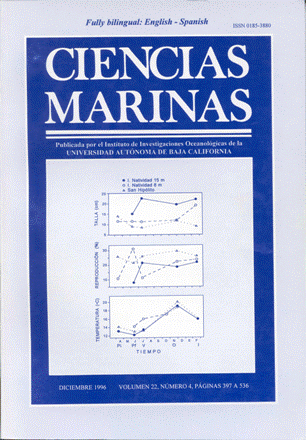Seasonal biomass variation of Chondracanthus canaliculatus (Rhodophyta, Gigartinales) associated with environmental factors, using a principal components analysis
Main Article Content
Abstract
Associations between biomass (dry weight) of Chondracanthus canaliculatus (Harvey) Guiry and atmospheric and seawater temperature, wave energy and hours of tidal emersion were determined using a principal components analysis. Bimonthly samples of C. canaliculatus biomass were collected from November 1988 to November 1989, Chondracanthus canaliculatus biomass had a marked seasonal cycle, with maximum values of biomass in summer (670 g m–2) and minimum in winter (126 g m–2). The principal components analysis showed that high biomass (grater than 543 g m–2) was associated with high atmospheric temperatures (greater than 21.4ºC) and low wave energy (less than 95.7 cm). Low biomass (less than 323 g m–2) was associated with low atmospheric temperatures (less than 17.2ºC) and tidal emersion between 81.5 and 109 h. Medium biomass values (323-543 g m–2) were associated with high water temperatures (grater than 16ºC).
Downloads
Article Details
This is an open access article distributed under a Creative Commons Attribution 4.0 License, which allows you to share and adapt the work, as long as you give appropriate credit to the original author(s) and the source, provide a link to the Creative Commons license, and indicate if changes were made. Figures, tables and other elements in the article are included in the article’s CC BY 4.0 license, unless otherwise indicated. The journal title is protected by copyrights and not subject to this license. Full license deed can be viewed here.

